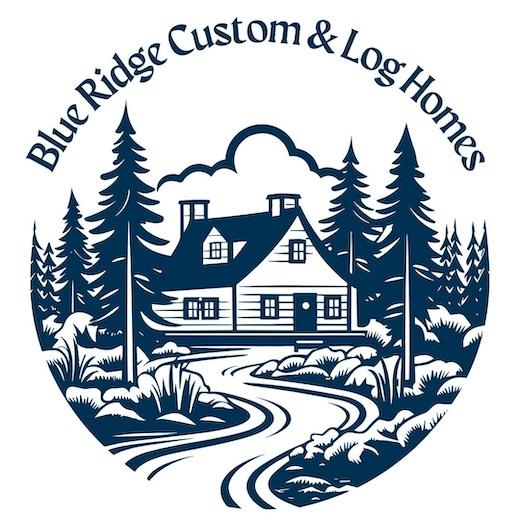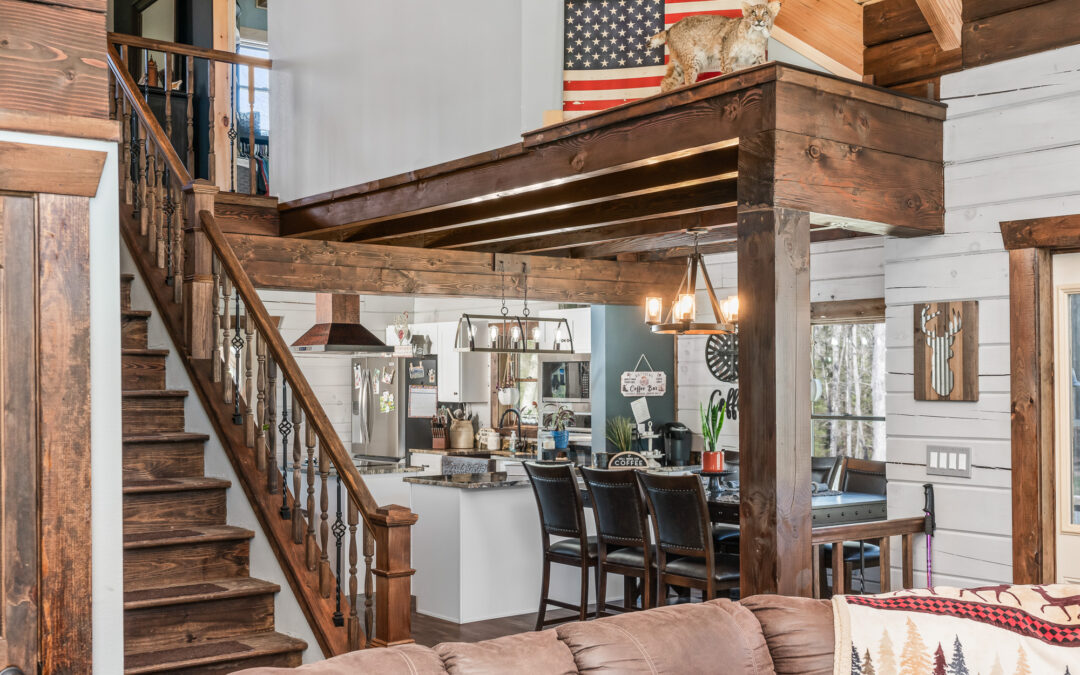One of the most common misconceptions about log homes is that they are dark and cave-like inside. While it’s true that natural wood absorbs light differently than painted drywall, a well-designed log home can be just as bright and airy as any modern house. The key is to incorporate smart design strategies that maximize natural light, reflect brightness, and enhance the feeling of openness.
At Blue Ridge Custom & Log Homes, Lou and Eileen Pagano work with homeowners to create log and timber frame homes that balance warmth and brightness. Here are the best ways to ensure your log home is filled with natural light and an inviting ambiance.
1. Strategic Window Placement
Windows are the most effective way to bring in natural light. When designing a log home, consider the following:
- Large Windows & Glass Doors: Floor-to-ceiling windows, oversized picture windows, and sliding glass doors allow sunlight to flood interior spaces.
- Positioning for Sunlight: South-facing windows receive the most daylight throughout the day, while east-facing windows bring in morning sun, and west-facing ones add warmth in the evening.
- Clerestory Windows & Skylights: High-set windows and skylights introduce natural light from above, reducing shadows and illuminating darker corners.
2. Open Floor Plans & High Ceilings
A well-thought-out floor plan can help distribute light evenly throughout the home. Open-concept designs allow light to travel freely from one space to another. Timber frame homes, which often feature vaulted ceilings and exposed beams, naturally create a sense of openness.
Additionally, loft spaces and second-story balconies can prevent upper levels from feeling closed off, allowing light to filter down into the main living areas.
3. Light-Colored Stains & Finishes
The natural beauty of wood is one of the main appeals of log homes, but opting for lighter stains and finishes can help brighten interiors:
- Whitewashed or Pickled Finishes: These maintain the wood’s natural grain while reducing its darkness.
- Light Honey, Oak, or Natural Pine Tones: These hues reflect more light compared to deep mahogany or walnut stains.
- Contrasting Walls & Ceilings: Using a mix of wood tones, such as keeping walls lighter while incorporating darker beams, creates balance without feeling overwhelming.
4. Reflective Surfaces & Light-Colored Décor
Reflective materials enhance brightness by bouncing light around a room. Consider these design choices:
- Mirrors & Glass Elements: Strategically placing mirrors across from windows can amplify natural light.
- Light-Colored Flooring: Lighter woods, stone, or neutral rugs can prevent a heavy, dark feel.
- Soft Furnishings & Textiles: Cream, beige, pale blues, and other light-colored fabrics can contrast beautifully with wood tones.
5. Layered Lighting Design
Even with excellent natural lighting, well-placed artificial lighting is essential, especially during the evenings or on cloudy days. A balanced approach includes:
- Ambient Lighting: Chandeliers, recessed lighting, and track lighting provide general illumination.
- Task Lighting: Pendant lights over kitchen counters, reading lamps, and under-cabinet lighting ensure well-lit functional spaces.
- Accent Lighting: Wall sconces, up-lighting, and LED strips highlight architectural features and create depth.
6. Outdoor Living Spaces & Covered Porches
Log homes often include covered porches and overhangs, which add charm but can block sunlight. To prevent excessive shading:
- Use angled roof designs to allow light in while still providing shade where needed.
- Opt for pergolas or partially open structures that let light filter through.
- Incorporate outdoor seating areas with lighter-colored furniture to create a seamless, bright extension of the home’s interior.
7. Thoughtful Landscaping
The natural surroundings of a log home are part of its appeal, but dense trees and foliage can reduce indoor brightness. A few landscaping tips to enhance light flow include:
- Trimming Overhanging Branches: Keeping trees pruned ensures windows remain unobstructed.
- Choosing Reflective Hard-scaping: Light-colored stone pathways or patios help bounce light toward the home.
- Using Low-Growing Shrubs: Avoiding tall plants near windows preserves sightlines and lets in more sunshine.
Conclusion: A Bright & Inviting Log Home
A log home doesn’t have to feel dark. By implementing thoughtful design strategies—such as maximizing natural light, choosing the right finishes, and layering lighting—homeowners can enjoy a warm yet airy space. Blue Ridge Custom & Log Homes specializes in crafting stunning log and timber frame homes that embrace the beauty of wood without sacrificing brightness. With the right approach, a log home can feel as open and luminous as any modern residence.
Interested in designing a log home that feels bright and welcoming? Contact Blue Ridge Custom & Log Homes today to explore your options!

